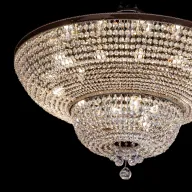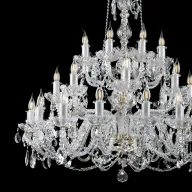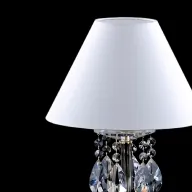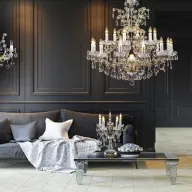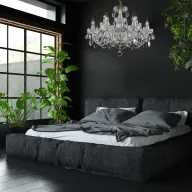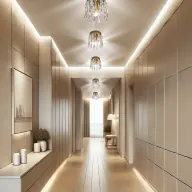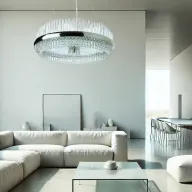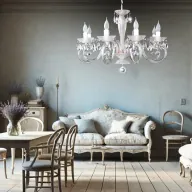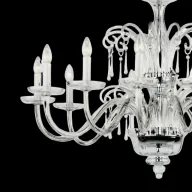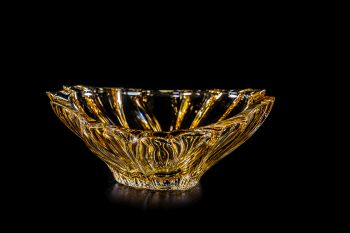How to combine daylight and artificial lighting
Added 14.7.2022 12:30.46
Surveys show that on average we spend up to 80% of our day indoors. At work, in the shop, but especially at home. That's why we should ensure an optimal combination of daylight and artificial lighting. Light significantly affects not only the atmosphere of a room, but also our mental and physical health. See how you can achieve this.

The phenomenon of so-called healthy indoor environments is nothing new. Ergonomic lighting is already an integral part of working life, because a lack (or excess) of good quality light can lead to fatigue, eye or headaches, impaired concentration or mental problems.
In short, every activity needs a certain intensity of lighting. And when it is not optimal, we don't feel comfortable. No matter whether we are at home or in the office, whether we are resting, cooking or working. It is always essential to adjust the lighting conditions to suit the specific environment and activity.
And we have not fundamentally disrupted the circadian rhythm.
The circadian rhythm is an imaginary internal clock that controls our activity or, on the contrary, the lull during the day and night, mainly depending on how much light we are currently receiving.
In the ancient past, circadian rhythms were perfectly natural. People woke up at dawn, were out for much of the day and fell asleep at dusk. The body had plenty of energy to move, digest food, etc., thanks to the sun's rays. Conversely, when the sun went down, it gave a clear signal for people to wind down, relax and prepare for sleep.
At night, the body could then repair itself, clean itself and rest. The organs were active and rested at their natural time. And most importantly: the right hormones could be produced at the right time.
The human body is simply adapted to life outdoors, in nature. But man invented artificial lighting and started spending his days cooped up in buildings with a complete lack of daylight, turning the circadian rhythm literally upside down.
Therefore, it is essential to simulate natural lighting not only at work but also at home to evoke the light conditions outside.
In general, the more daylight you let into your home, the better. After all, it's not for nothing that the saying goes "where the sun don't go, the doctor goes". You can always draw the curtains or blinds...

Light affects the hormones cortisol, melatonin and serotonin. The first wakes us up and keeps us agile, the second is responsible for quality sleep, and the third puts us in a good mood.
And for example, to get a natural "start" we need daylight at 1000 lux. In this case, we are not tired and we get to operating temperature even without coffee, while with the same intensity but artificial lighting we feel completely different.
In short, the biological clock knows whether we are trying to fool it or not.
You can see for yourself what is better in the morning - opening the curtains or pulling the blinds and then letting in daylight, or turning on the light?

And so it is with everything. Whether we're eating breakfast in the kitchen, relaxing in the living room, or reading in the bedroom. In terms of quality and impact on the psyche, natural daylight cannot be completely replaced, but appropriately supplemented it can.
The optimum combination of daylight and artificial lighting is therefore such that it contains as much natural light as possible and in total achieves the recommended value for the room and activity.
Recommended lighting intensity by room
- Bedroom, living room, children's room - 200 lx
- Kitchen, bathroom, porch - 150 lx
- Hallway - 100 lx
Recommended intensity by activity
- Cooking - 500 lx
- Reading - 300 lx
- PC work - 400 lx
In addition to light intensity, the colour or temperature of the light is also important. This is what the range looks like.

Even the temperature of artificial light needs to be adapted to each room to best fulfil its purpose.
Where we want to work (either at the PC or manually - for example on the kitchen counter), it is advisable to choose a cooler shade that reminds us of daylight and gives us energy. On the other hand, for rooms where we primarily relax, we recommend choosing a bulb with a warmer light.
Ideal light temperature for the kitchen
You can hardly cut meat, vegetables or just bread with precision if you can't see properly under your hands. In short, kitchen chandeliers should emit a bright and crisp light all around so that you are in full control of your cooking.

We usually recommend a temperature of around 4000K. But you can choose to combine several types of lighting - for example, put a cooler light above the worktop and a slightly warmer bulb in the chandelier above the dining table.
Ideal light temperature for the living room
In the living room we mainly watch TV, spend time with visitors or relax while playing games - in short, well-deserved comfort. That's why we most often recommend to our clients ceiling lights for the living room in warmer colours with a value of 2700-3000 K.

Cooler shades evoke daylight, so the brain will think it's day at midnight, which can cause problems falling asleep. A popular alternative is to combine lights of different colours and choose them according to preference and current activity. This is easily achieved. Simply choose a chandelier for the living room with a cooler 4000K colour as the 'main' lighting for the living room and complement it with lamps with a warmer shade.
Ideal light temperature for the home office
The home office is becoming more and more widespread and this phenomenon doesn't seem to be going away. More and more people are setting up a dedicated room at home just for work, to create the right conditions for it and to better separate their private and professional lives, even if they both take place in the same place. Light around 4000K will boost your concentration and keep you alert for longer.

Ideal light temperature for the bedroom
Above all, we need to have the best possible environment in the bedroom for uninterrupted sleep to ensure we have enough energy for the next day. That's why a bedroom chandelier with a warmer light colour between 2,700 and 3,000 K is the ideal central lighting for the bedroom to maintain your natural circadian rhythm.

We're here for you
Need advice on how best to combine artificial lighting from crystal chandeliers with daylight? Contact us. We will be happy to help you.








